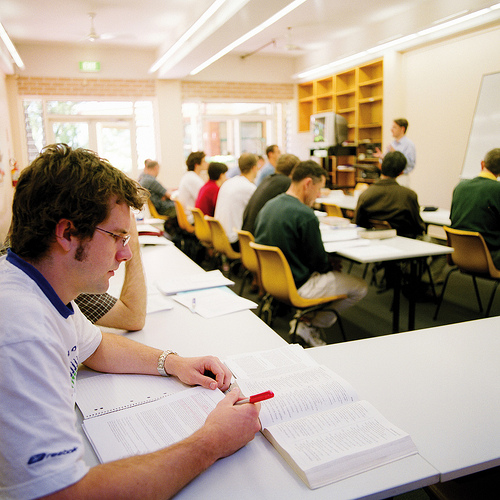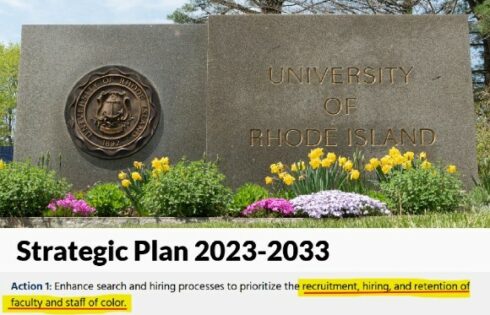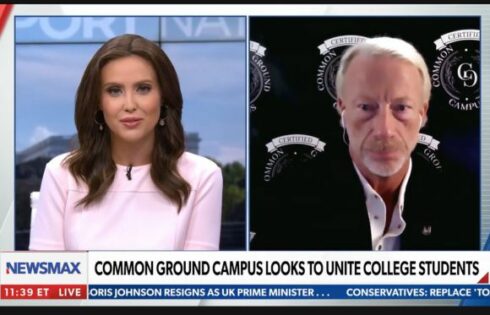
Lane Community College President Mary Spilde said she was surprised recently to learn a survey of nearly 1,000 college presidents found that most of them believe financial crises facing their campuses are just bumps in the road.
Spilde is not wearing the same “rose-colored glasses,” she said in a recent webinar hosted by Inside Higher Ed that took place in conjunction with the release of its survey of 841 college presidents across the nation.
The survey found that seven in 10 presidents said their institutions would face budget shortfalls this year – “but fewer than a third said they expected to take the sort of strong actions – cutting administrative positions, freezing salaries, changing faculty roles or teaching loads – that would suggest deep concern, let alone panic, about their institutions’ financial futures.”
Meanwhile, Spidle said her Oregon campus has tried most of those cost-cutting measures and she still holds concerns for her school’s future in the wake of ongoing cutbacks of state and federal aid.
“When you look at the five most favored strategies for change, frankly these are things community colleges have already done,” she said, referring to the most popular efforts cited on the survey to tighten school budgets: collaboration on academic programs; streamlining administrative services; eliminating underperforming programs; offering much more web-based instruction; and shifting undergraduate teaching to part-time faculty.
“They’ve already increased adjunct faculty, decreased administrators, and so forth,” Spilde said of college administrators. “So there’s not really any place to go on this except tuition.”
“And,” she added, “in Lane, our tuition has (almost) tripled in the last thirteen years, and for us, over 60 percent of our students receive the Pell Grant. Every dollar in tuition increase is a real challenge for them.”
Nevertheless, other belt-tightening efforts colleges could undertake to stave off more tuition increases are not very popular among those surveyed. Strategies least favored by college presidents include outsourcing academic programs, cutting spending for athletic programs, reducing student support services, and adjusting faculty salaries.
But campus leaders may just have to buck up and try some of these ideas, said Georgia Nugent, president of Kenyon College in Ohio and another webinar guest.
“Obviously those strategies that didn’t seem too attractive to presidents – some of those strategies are going to have to come into play,” she said. “All of our tuition streams are being increasingly constrained. And we don’t want to raise tuitions, but we don’t know where else to go.”
Despite Spilde’s and Nugent’s differing views with the majority of their surveyed peers, the presidents had an explanation for the survey’s results.
“As a college president, you have to provide kind of a hopeful future for the people that you work with and for your community,” Spilde said. “And if all you can do as a president is say ‘Well, there’s nothing we can do about the situation’ – that’s not helpful. So I do think it’s a job of the president to provide a hopeful future for the faculty and staff at our colleges.”
But campus leaders are at a crossroads, according to John Lombardi, former president of the Louisiana State University System.
“These answers suggest to me a group of people in charge of institutions in a transition between what was and what is,” Lombardi told Inside Higher Ed. “They are not sure how this game is going to play out. They’re coming out of a period of great stress, and many think they’re going to be okay. … They recognize the threats, and they’re worried about it. But their job is to make what’s functioning now function, and they don’t believe what they’re seeing is catastrophic.”
Yet one place college presidents won’t look to for solutions is Washington, D.C.
“Fewer than 1 percent of presidents strongly agree the federal government is ‘likely to provide solutions for key problems facing higher education in this country,’” the survey found.
With that, while most of the surveyed presidents believed that their budget issues are not insurmountable, they don’t see aid coming come from the feds. It puts presidents in a difficult place financially, Spilde said.
“Boards of education are feeling very challenged by that,” she said. “They are seeing that students want to stop tuition increases, but when they look at how they can provide access, not just affordable access, but access to good programs that give students choice, they are feeling like their backs are against the wall. I think it’s going to continue to be a huge problem for the (public colleges) until we decide how we’re going to resource public higher education.”
Fix contributor Valerie Taylor is a student at Wheaton College.
Like The College Fix on Facebook / Follow us on Twitter





Please join the conversation about our stories on Facebook, Twitter, Instagram, Reddit, MeWe, Rumble, Gab, Minds and Gettr.